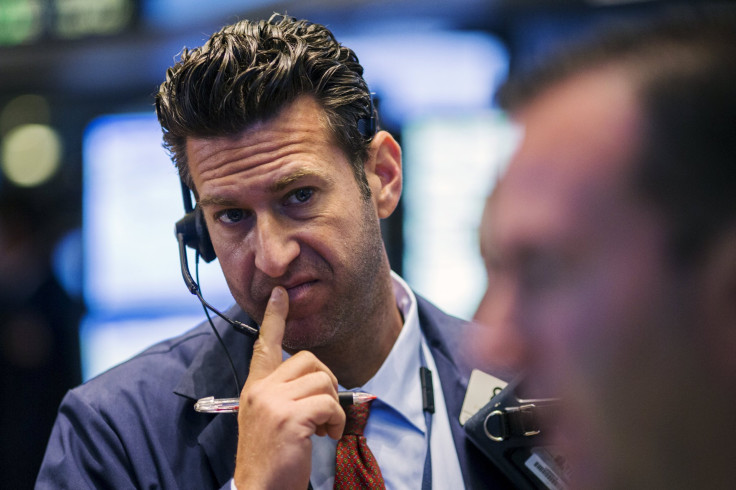Dow Jones Industrial Average Tumbles 200 Points After Oil Prices Drop 3% Ahead Of FOMC Minutes

U.S. stocks traded sharply lower Wednesday morning, with the Dow Jones Industrial Average plunging 200 points after oil prices tumbled to six-year lows following an unexpected rise in crude stockpiles. All of the 10 Standard & Poor's 500 sectors traded lower, led by a 2 percent decline in energy stocks, which also weighed on the materials and industrials sectors.
The losses come as investors are looking ahead to the Federal Reserve's latest meeting minutes, to be released at 2 p.m. EDT.
The Dow Jones Industrial Average (INDEXDJX:.DJI) tumbled 200.28 points, or 1.14 percent, to 17,311.06. The S&P 500 index (INDEXSP:.INX) lost 22.10 points, or 1.05 percent, to 2,074.99. And the Nasdaq composite (INDEXNASDAQ:.IXIC) dropped 50.56 points, or 0.99 percent, to 5,009.38.
All 30 stocks in the Dow traded in the red, led by the world’s second-largest publicly traded oil and gas company, Chevron Corporation (NYSE:CVX), which sank 2.5 percent.
Energy stocks fell under pressure after oil prices tumbled in six-year lows following an unexpected rise in crude stockpiles. U.S. crude inventories rose by 2.6 million barrels last week, the U.S. Energy Information Administration said Wednesday. At 456.2 million barrels, U.S. crude oil inventories remain near levels not seen for this time of year in at least the last 80 years.
Following the report, West Texas Intermediate crude, the benchmark for U.S. oil prices, dropped nearly 3 percent to $41.37 per barrel for September delivery on the New York Mercantile Exchange. On the London ICE Futures Exchange, Brent crude, the global benchmark for oil prices, fell 1.5 percent to $48.05.
Separately, U.S. consumer prices edged up in July despite falling energy prices, which are gradually stabilizing enough to register slight gains in inflation and bolster expectations for the Federal Reserve to lift interest rates this year.
The Consumer Price Index edged up 0.1 percent last month after advancing 0.3 percent in June, the Labor Department said Wednesday. The gains marked the sixth straight month of increases.
Economists forecast inflation will continue to perk up in the coming months on stronger domestic activity and reduced pass-through from the stronger dollar. “Rebounding inflation combined with solid employment growth will likely lead the Fed to raise rates in September,” Gregory Daco, head of U.S. macroeconomics at Oxford Economics, said in a note Wednesday.
Market professionals will be analyzing the Fed's minutes for further clues as to when the central bank will lift interest rates. Most economists anticipate the Fed will announce raising rates at its next meeting in mid-September, which would mark the first increase in nearly a decade.
© Copyright IBTimes 2024. All rights reserved.





















